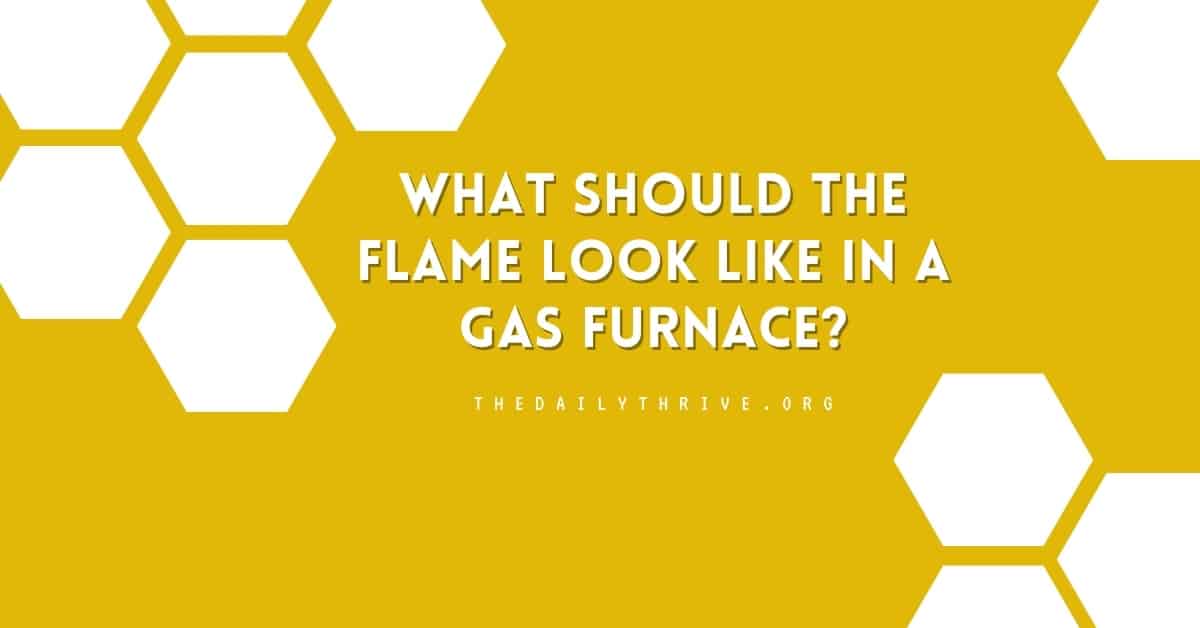One of the simplest things you can do to maintain your furnace is to check the color and behavior of the flame on the burner regularly. The color and behavior of the flames can be a good indicator of the health of your heating system.
Your natural gas furnace’s burner flames should be almost totally blue. According to heating service professionals, the sign of a good natural gas furnace is a roaring blue flame with a light blue triangle in the center. A sliver of yellow may also be present.
A blue flame signifies that the gas is used safely and efficiently rather than wasted. The bluer the flame, the hotter it is, and the more complete the combustion. A blue flame shows the gas is clean, with few contaminants and minimal moisture.
For complete blue combustion, there must be an adequate supply of oxygen. When your furnace burns completely, it produces the most heat and uses less energy to provide the proper heat.
Furnace Flame Colors
Furnace flames can be different colors, and each color indicates something about the state of the furnace.
- Blue flames are hotter than other flame colors because they’re created by complete or efficient combustion.
- Yellow flames signify the generation of carbon monoxide. This odorless, colorless, tasteless gas can produce headaches, nausea, hallucinations and, in severe cases, blackouts, in addition to being a symptom of inefficient combustion.
- Yellow and orange flames provide the least amount of heat.
What Causes a Red, Orange or Yellow Flame?
The main causes of other colors are dirt in the furnace and pollutants or water in the gas. Dirt or other contaminants in the furnace can cause the flame to appear red or orange, indicating incomplete combustion.
Incomplete combustion also generates carbon monoxide, which is dangerous to humans and pets. Incorrect flame may indicate the presence of copper or other metals in the gas, which can be a sign of a gas leak.
What Is the Danger of Incorrect Flame Colors?
If you have a yellow, orange, or red burner flame, this usually means that your burner is not receiving enough air for complete combustion. Inefficient combustion wastes gas, raises energy bills, and makes more soot. However, the biggest problem is that it creates more carbon monoxide (CO) during the combustion process.
Incomplete combustion wastes fuel and generates carbon monoxide, which is dangerous to humans and pets. Carbon monoxide poisoning can cause symptoms such as headaches, dizziness, nausea, vomiting, chest pain, and confusion. In severe cases, it can lead to death.
What Should I Do to Prevent Improper Furnace Combustion?
The best way to prevent improper furnace combustion is to schedule regular maintenance and tune-ups for your furnace. A professional HVAC technician will inspect and clean your furnace, including the burner, to ensure it operates safely and efficiently.
Additionally, to prevent improper furnace combustion, there are several things that you can do:
- Change the air filter regularly: A dirty air filter can reduce the airflow to the furnace, leading to incomplete combustion.
- Keep the area around the furnace clean: Dust and debris can accumulate around the furnace, blocking the airflow and causing incomplete combustion.
- Check the flue pipe: Make sure that the flue pipe is clear of obstructions and that it is properly connected to the furnace.
- Install carbon monoxide detectors: Carbon monoxide detectors are inexpensive but can add extra protection for your family.
Checking the flame on your gas furnace is important to maintaining your heating system. A blue flame indicates that your furnace is burning natural gas safely and efficiently. If you notice anything other than a blue flame, it is important to check your furnace immediately and call a professional HVAC technician.






